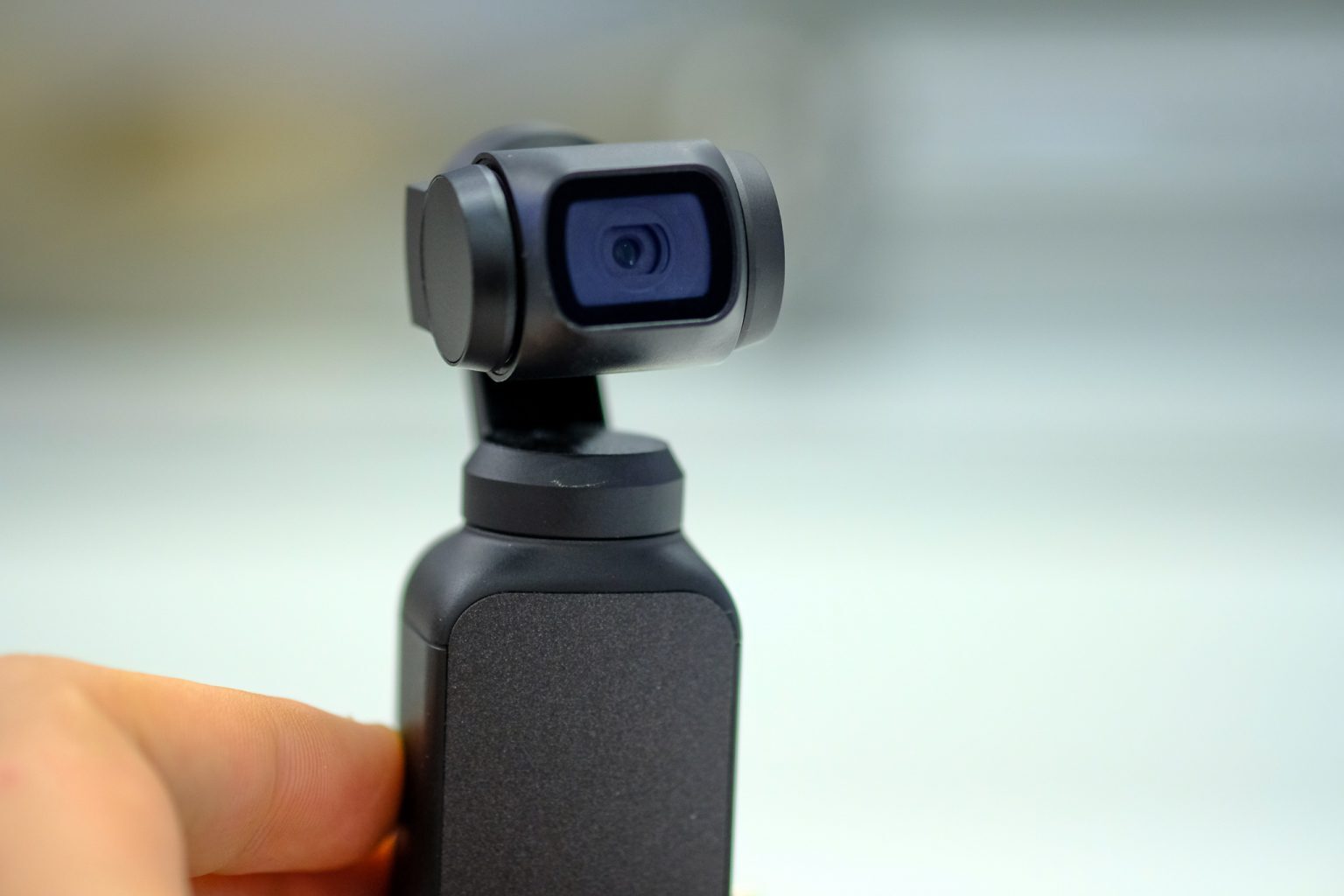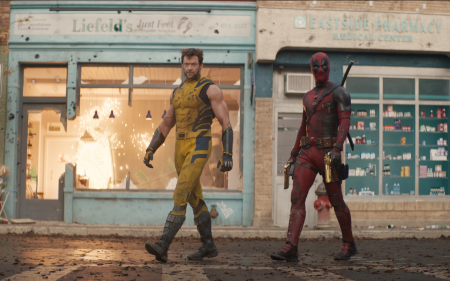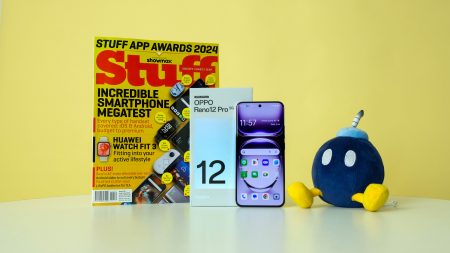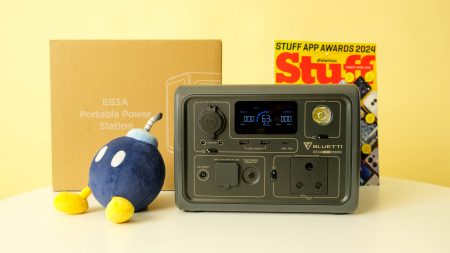The only thing keeping us from buying a Pocket right now is necessity. We’re not sure whether its need outweighs its price, but it’s a super cool gadget to own. Especially if you’re an amateur film-maker. Or if you want to up your Insta game.
-
User-friendliness
-
Pocket-ability
-
Footage niceness
If there’s one thing DJI does well, it’s image stabilisation. It has successfully taken tech only available to Hollywood directors back in the day, and made it widely available to anyone who can afford it.
And it doesn’t just include its various drones (from consumer to pro-level), it’s got a range of small camera kit that can turn anyone into a novice director. Meet the Osmo Pocket, a compact cam that takes the portability of a GoPro, and throws in a hint of shooting stability you’ll normally find in DJI drones.
This little action-cam is mounted on a three-axis mechanical gimbal and is small enough to slip into the front pocket of a button-down shirt. Yes. For reals. It even captures 4K footage.
If it fits, it sits
At just 12.2cm tall and 116g light, the Pocket is officially the smallest 4K cam we’ve tested. Its build is as solid as you’d expect from DJI. The head doesn’t feel like it’s about to come off (sorry Ned Stark), and it feels strong to slide into a skinny-jean front pocket.
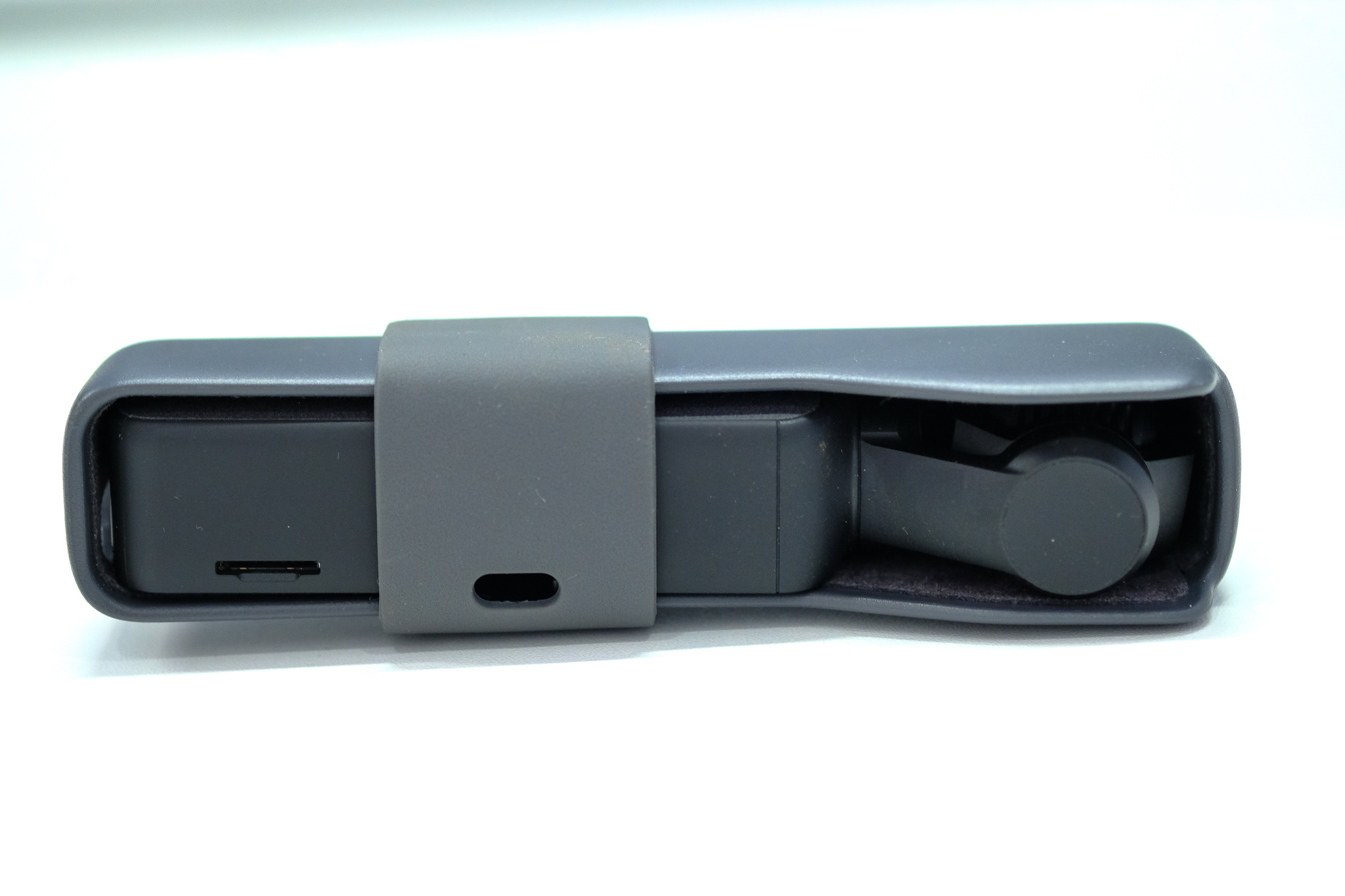 But that doesn’t mean that you should… The Pocket comes with a nifty hard-shelled pouch that keeps all the bits intact. We said the Pocket is strong, but it’s not indestructible. Remember that the robotic arm harbours all sorts of delicate tech that won’t fare well if squashed by a wallet.
But that doesn’t mean that you should… The Pocket comes with a nifty hard-shelled pouch that keeps all the bits intact. We said the Pocket is strong, but it’s not indestructible. Remember that the robotic arm harbours all sorts of delicate tech that won’t fare well if squashed by a wallet.
The Pocket fits neatly and firmly in the palm, its two front buttons make it easy to switch between shooting modes, flip the lens around to face you and start/stop recordings, but its touchscreen is truly tiny.
Sure, the display is just big enough to scroll through settings and access the menus. Navigating on the tiny display soon becomes easy enough — but we did prefer using a phone mounted to really enjoy shooting on the Pocket.
Pocket Rocket
Obvs it’ll be pretty hard to check out your sweet new footage on the small display, but transfer clips over to your laptop or phone and you’ll find almost everything captured by the Pocket is sharp, smooth and better than what your smartphone can do.
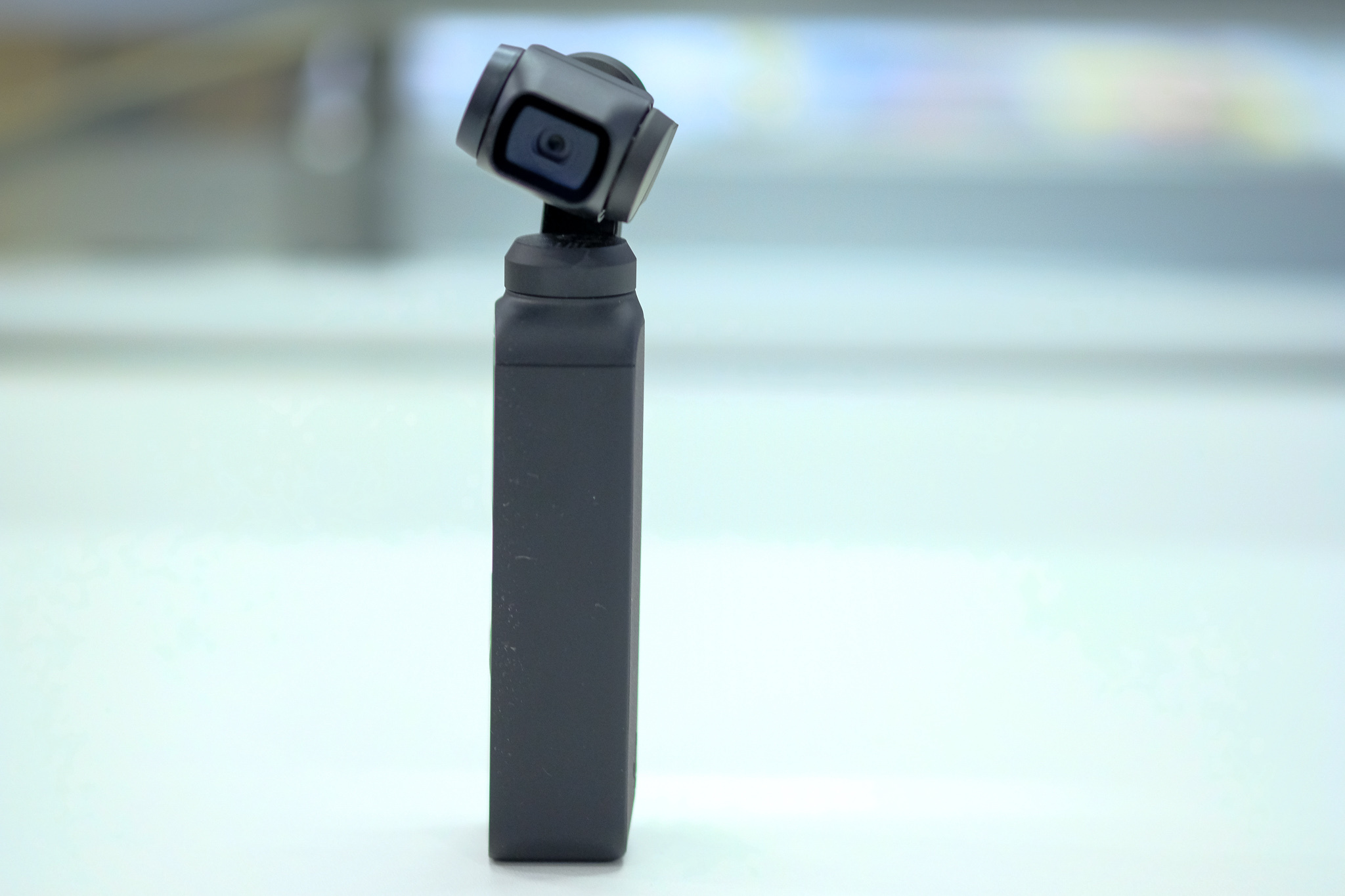 You can also choose which resolution you’d prefer: swipe twice to the left and you’ll find a range of resolutions and frame rates, going all the way up to 4K at 60fps. You can also choose between fine and superfine while enabling Pro mode lets you tweak colour temperature, white balance and exposure. You can also just leave it on auto (or ‘noob’ mode) and the Pocket delivers some ace shots.
You can also choose which resolution you’d prefer: swipe twice to the left and you’ll find a range of resolutions and frame rates, going all the way up to 4K at 60fps. You can also choose between fine and superfine while enabling Pro mode lets you tweak colour temperature, white balance and exposure. You can also just leave it on auto (or ‘noob’ mode) and the Pocket delivers some ace shots.
Recording on the highest res will torture the battery though, so make sure the little dude is charged up if you’re planning on shooting a movie in your backyard. You’ll just get an hour on 4K, and at least a couple of hours on HD.
Keep it steady
As we’ve mentioned, the stabilisation tech on the Pocket is unparallelled (at the moment). The mechanical gimbal works tirelessly, using its three axes to physically counteract movements – occasionally fighting intentional motion too. But the result is as smooth as you’d expect.
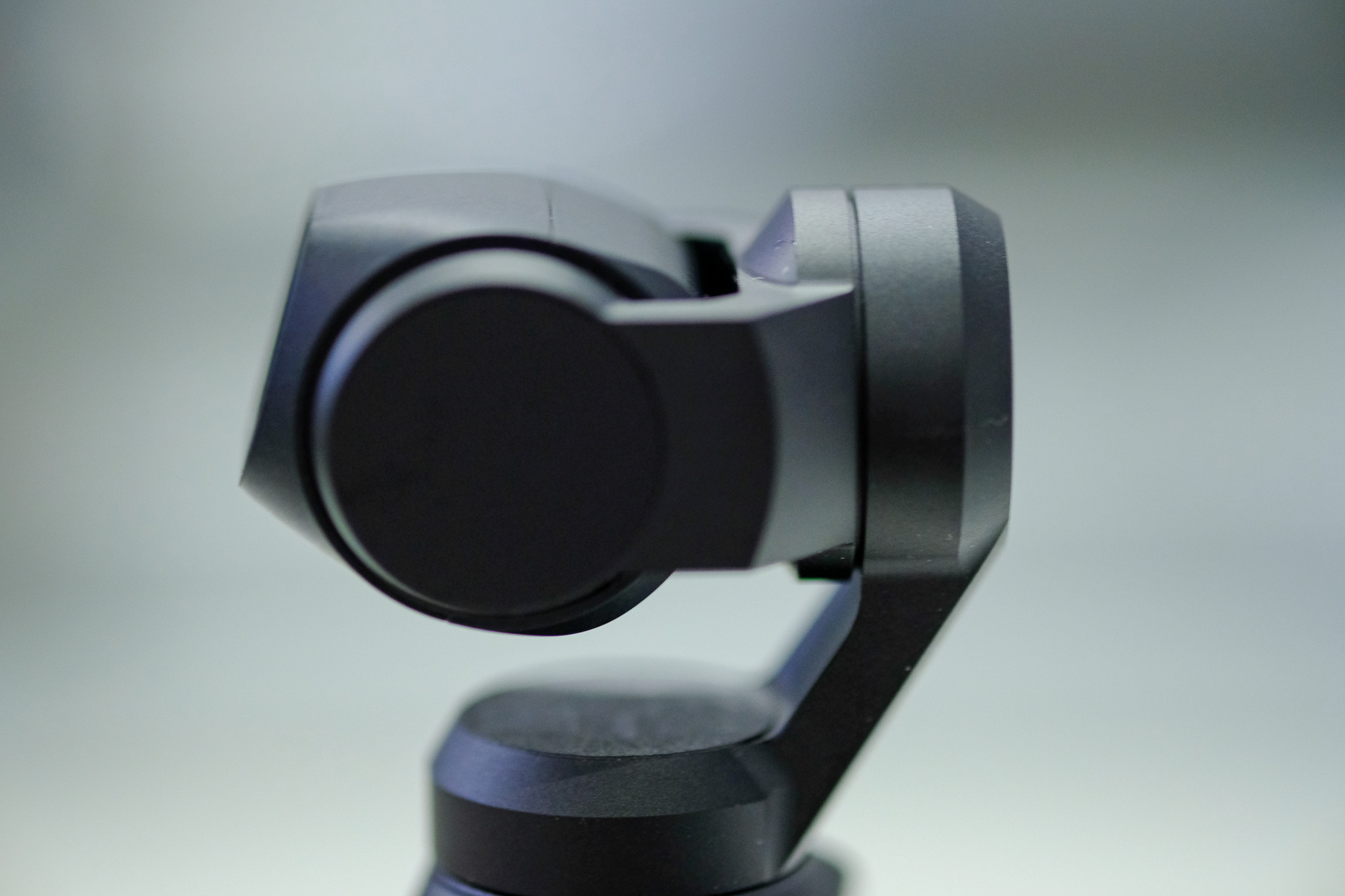 The gimbal has three modes to choose from — FPV for a first-person experience, Tilt Locked for fixed-pitch shooting and Follow for do-it-all stabilisation that follows and smooths your hand movements.
The gimbal has three modes to choose from — FPV for a first-person experience, Tilt Locked for fixed-pitch shooting and Follow for do-it-all stabilisation that follows and smooths your hand movements.
Our favourite feature, though, is the phenomenal subject-tracking option. Just go ahead and double-tap on a face or object on the screen and it’ll lock on, keeping said face or object in view as both you and it move around. It’s very reliable, we only had a few incidents of it losing track and glitching out a bit — but that\ll happen with an energetic pitbull galloping around the garden.
If there’s one thing we could whine about, it’s the audio quality. It’s very average, but kind of expected on such small hardware. There is a fix though — go out and buy the 3.5mm accessory (or use the included USB-C adapter with a third-party one) and use an external mic if you’re planning to use the Pocket with good audio reception.
Modes and modes and modes
In the menu, you’ll find an option to take 12MP photos, snap automatic panoramas, shoot in slow-motion and capture time-lapse videos. The last few are especially cool to use, especially if you deploy the Motionlapse mode. Set a start- and endpoint for your clip by manually moving the gimbal and tapping on the screen, choose a shooting interval and the Pocket will capture a timelapse while gradually panning, for a properly cinematic effect.
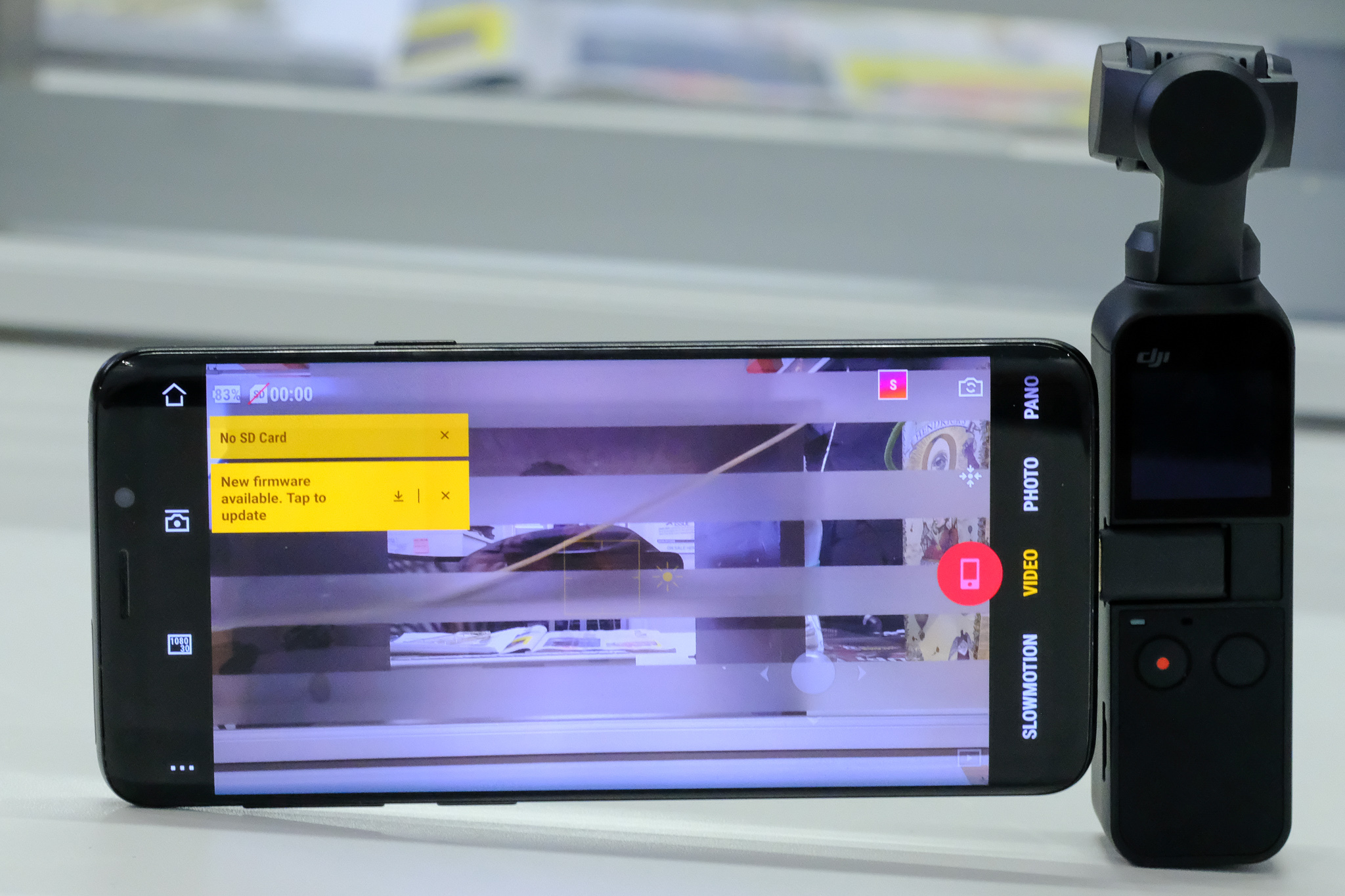 Connect your smartphone to have access to all these cool modes — here you’ll be able to do Stories and track subjects even better through the connected Mimo app. This will also allow you to capture footage without an SD card mounted in the Pocket, and record directly to your phone. There’s also a Wireless Module (which is part of the expansion kit) that doubles up as a handy base while also allowing remote smartphone control.
Connect your smartphone to have access to all these cool modes — here you’ll be able to do Stories and track subjects even better through the connected Mimo app. This will also allow you to capture footage without an SD card mounted in the Pocket, and record directly to your phone. There’s also a Wireless Module (which is part of the expansion kit) that doubles up as a handy base while also allowing remote smartphone control.
That said, the Mimo app is not immune to glitches. It crashed on a couple of occasions, while a few of the pre-programmed story motions simply didn’t translate to physical action on the camera.
DJI Osmo Pocket Verdict
The only thing keeping us from buying a Pocket right now is necessity. We’re not sure whether its need outweighs its price, but it’s a super cool gadget to own. Especially if you’re an amateur film-maker. Or if you want to up your Insta game.
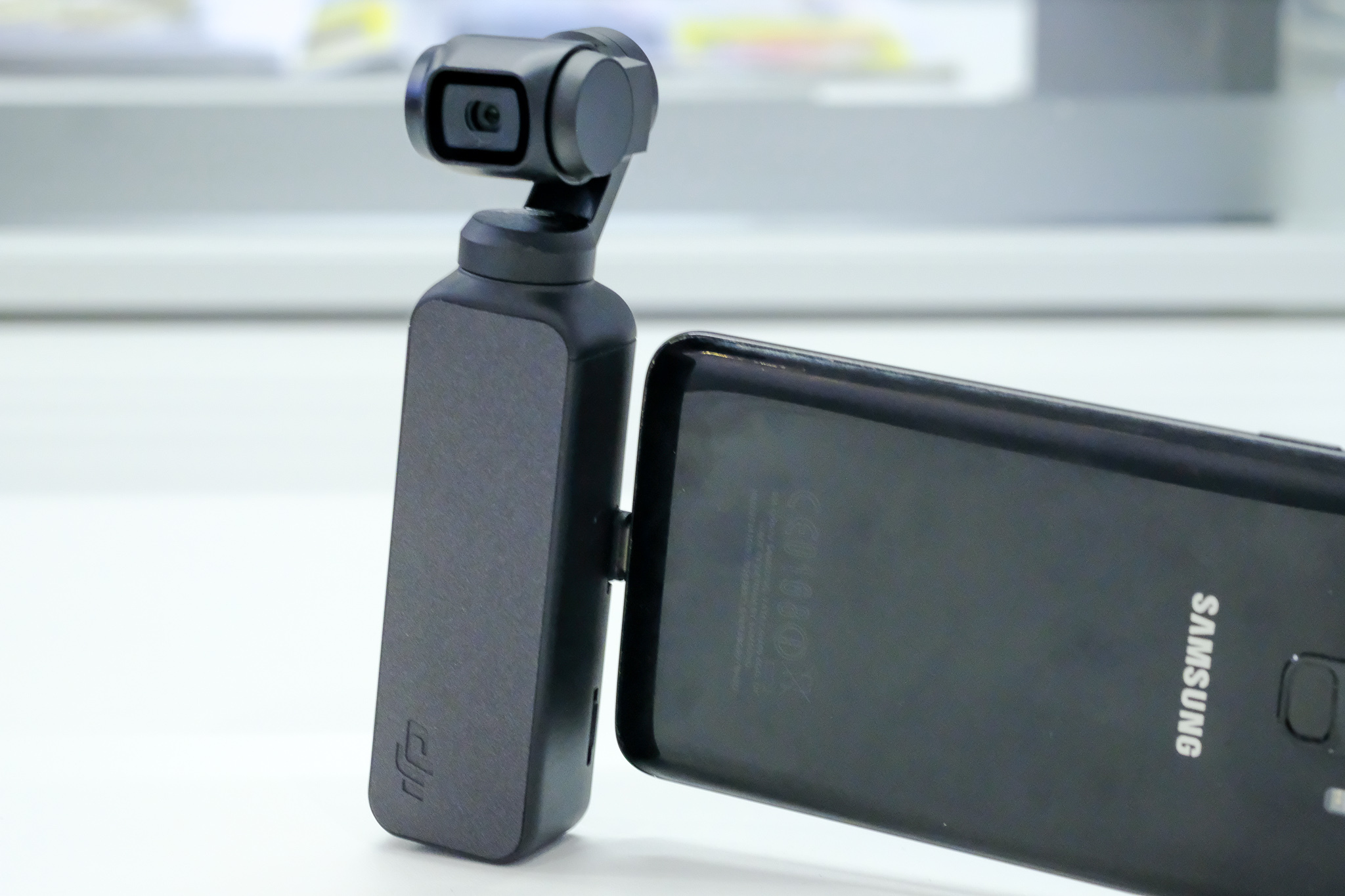 It’s fun, intuitive and impressively capable. It delivers better footage than most smartphones can, at a fraction of the size. But the cost? It’s priced between R7,000 and R8,000 depending on the South African retailer. We’re gonna need much more than ‘it’s a cool camera’ to convince our significant other to buy us one tbh.
It’s fun, intuitive and impressively capable. It delivers better footage than most smartphones can, at a fraction of the size. But the cost? It’s priced between R7,000 and R8,000 depending on the South African retailer. We’re gonna need much more than ‘it’s a cool camera’ to convince our significant other to buy us one tbh.
The hardware is durable, reliable and brilliant, and of course, it’s worth every cent — but this thing is a niche thing. It’s not an accessory nor standalone camera, priced like a proper compact but best used with your phone. Does that make it a bad product? Absolutely not. In fact, it was the most enjoyable filming experience we’ve had since the Osmo Mobile 3.

